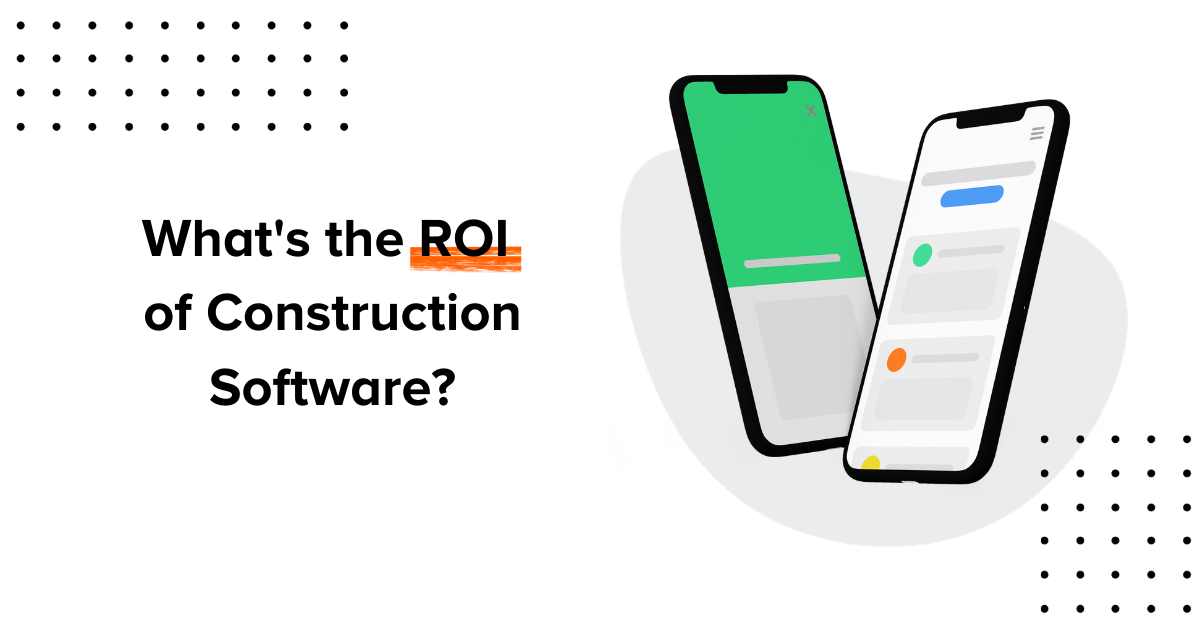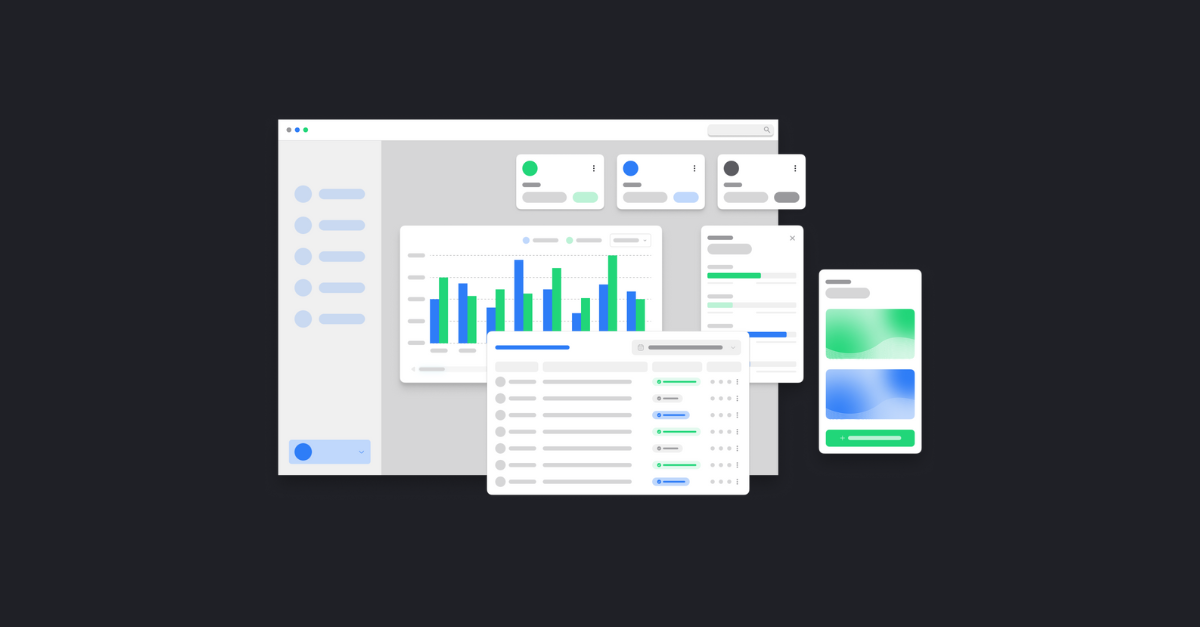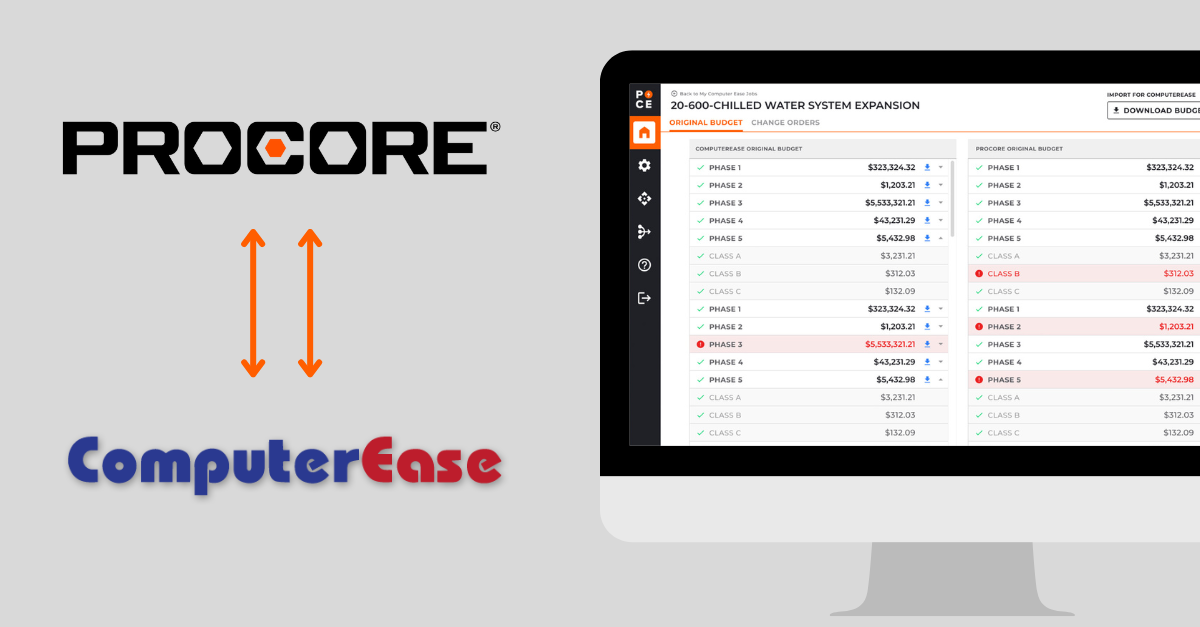There’s been more pressure than ever for construction leaders to embrace technology and innovation– amid labor shortages, changing workforce demographics, safety and budget compliance, and new digital tools.
But, implementing new management software (and undergoing change) almost always feels risky. And just because you see other trade leaders adopting digital tools, it doesn’t mean that particular tech is also right for your business.
So, how do you know if new software will give you the value you need?
The answer is simpler than you might realize. You can use the same logic used to determine which tools of your trade to purchase– and it can be applied to investing in technology. Just like a large piece of equipment, you can investigate and plan for the total cost of ownership along with the total return of software.
How to Build the Business Case for Construction Management Software
Implementing any new construction management software is usually a significant change for a construction company. It takes efforts and resources to adopt new processes and tools that will sync the many different parts of your project.
So before you make the decision to change, you want to feel confident that it’ll be worth it.
The good news? You can calculate an expected ROI before making any purchases. And, most construction leaders find that automating a few key processes can have a big impact.
In theory, ROI calculations are a simple mathematical formula:
ROI = net return on investment / total investment cost x 100%
Using this approach you can easily calculate hard dollar amounts with certainty.
But, your analysis should also be holistic. It should include benefits that may be difficult to translate into hard dollars, but are still real benefits.
We recommend looking at three distinct areas when calculating ROI:
- Direct savings (easy to calculate)
- Indirect savings
- New revenue opportunities (not always concrete to measurable)
Download our interactive ROI worksheet to use alongside this article.
1. How to Calculate Direct Savings of Software
The easiest ROI value to identify is time saved directly from using a new digital tool instead of an outdated or manual process. Many construction management apps will turn manual processes (like time tracking or scheduling) into efficient processes that take less time and eliminate duplicate data entry in the office.
For example,
- A back office employee typically takes 5 hours per week to enter time tracking data
- Now, your new digital workflow reduces that 5 hours to 1 hour, saving 4 hours
- Your new weekly savings = 4 hours X employee’s hourly rate
- If you have 3 staff members doing this data entry, then you can multiply 4 hours per week x 3 staff members x their hourly rate
- Apply this estimate to the total savings your new software tool will generate over a given time frame (typically a year) and over its lifetime.
You can repeat this same formula for each type of employee (both field and office) or workflow directly impacted by technology.
Real-world Example: ROI Estimation
Here’s a real example of a direct labor cost savings calculation from a client considering custom construction software. You can find this worksheet here for your own calculations.

How else will your new tool directly save your company money? Are you replacing existing tools (and their monthly costs)? You can easily factor these cost-savings into your final estimation as well.
2. How to Calculate Indirect Savings of Software
While some cost-savings fit neatly into a formula, others aren’t as simple. Consider these potential indirect savings of digital transformation that can also improve your business over the long run.
- Reduced employee turnover
- Reduced recruiting costs
- Reduced costly mistakes
- Reduced scheduling errors
- Reduced time on legal and safety compliance
- Preventing lost business know-how when key employees leave
3. Don’t Forget to Consider New Revenue Opportunities
A hard-calculated ROI can be too simple and leave out potential savings. There will be immediate returns (like saving time and reducing errors), but the real value of technology is its ability to open your business up to new possibilities (and revenue). It’s not an implement once, and never think about it again.
With your new construction software in place, what more productive tasks could your best people be doing? What new opportunities can you pursue that your old ways would never allow?
- Scaling processes to take on more (or complex) projects
- Pursuing new business lines
- Improving your customer experience
- Improving the culture at your company
- Improve your business’s reputation
Real-world Example: White labeling your Software Product
After building their own custom software, SPARK client Andy Egan had an unexpected opportunity – white labeling their app.
When other construction leaders saw their powerful software, they also wanted to use it for their own organization. Andy Egan was able to turn their initial software investment into a new revenue stream.
Read stories about successful construction digital tools launched with SPARK →
How to Calculate Your ROI [DIY Worksheets]
To help you estimate your ROI for new construction technology, SPARK has two worksheets to guide you through the process. We built these from our experience helping hundreds of trade contractors implement easy, fast, and simple digital tools to work the way their business does.
- Download our ROI Estimating Tips and worksheet to brainstorm the different cost savings areas for your business and see your estimated ROI.
So, How Long Until You See ROI on Construction Software?
After you implement new technology, how long will it take for you to see your calculated return? Honestly, it depends. It comes down to your individual business situation and the scope of the solution you implement.
Fortunately, 90% SPARK construction clients often see a return on their investment within 6 to 18 months as they’re focused on building fast, easy, and simple digital tools with the biggest impact.
See how we can help you build your own custom project management software.
What to Do Next
Keep reading these other articles to help you choose the best project management software for your business.
- One-stop Guide for Leveraging and Choosing Technology for Your Crews and Projects
- How to Plan for Digitization in Construction
- How to Choose the Best Project Management Software for Small Construction Businesses
- 7 Benefits of Custom Construction Management Software
- Signs Your Construction Management Software is Not Working for You
 >
>





